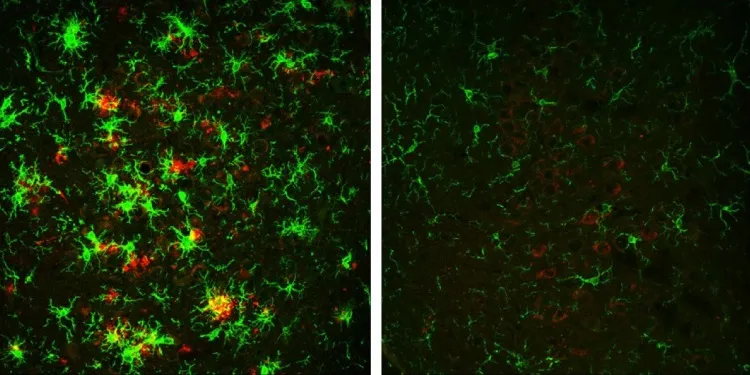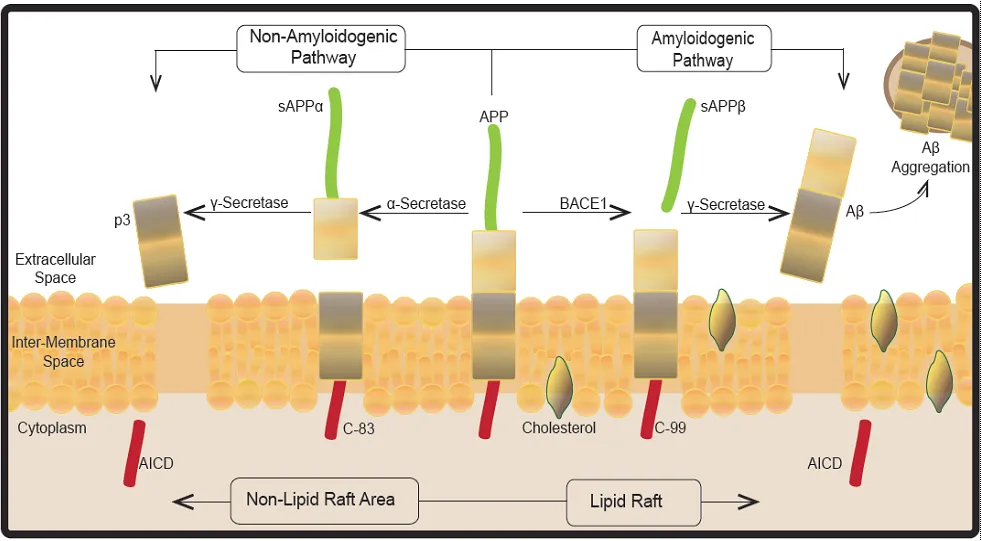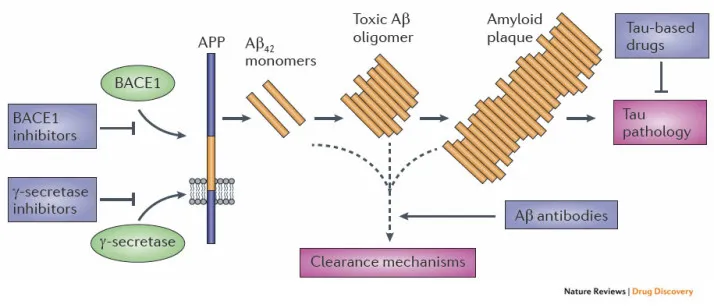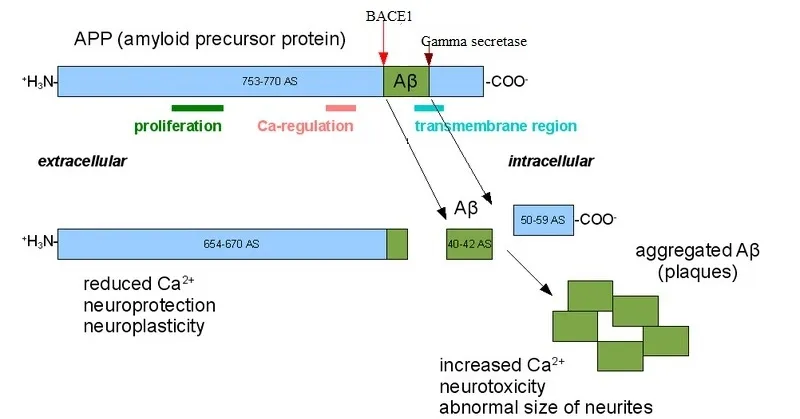
Image: On the left side, the 10 month Alzheimer's mouse brain appears. Red parts, amiloid plaques. Green cells are microglial cells. On the right side, it appears that the red regions in the brain have been reduced by inhibiting the enzyme BACE1.
Researchers at the Cleveland Clinic Lerner Research Institute showed that mouse with Alzheimer's disease could be reversed by reducing BACE1 enzyme. In this respect, cognitive functions have also been improved. This research hoped that a medicine could be produced to treat people with Alzheimer's.
Alzheimer's is caused by synaptic mating based on accumulation of beta-amiloid plaques. Until now, Alzheimer's, which is not a treatment, can not be reduced expect minor improvements. Therapy was only applied to improve the quality of life.

The BACE1 enzyme, known as beta-secretase, allows the production of beta amiloid proteins. In order to prevent Alzheimer's disease, it was thought that the enzyme that binds amiloid precursor proteins should be blocked.
At the same time, some side effects are expected because the beta-secretase enzyme also binds the other protein precursor. BACE1 enzyme-inhibited mouses were noted to have advanced neurodevelopmental disorders. Researchers who expect that side effects will be less in adult mice have also been experimented with. In this experimental group, the development continued well.

75 day old mice were modeled as Alzheimer's patients. The puppies continued to produce plates even tough the BACE1 levels were below 50 percent. But as the mice grew, the platelets began to disappear in the absence of BACE1 and in a 10 month-old mouse, a cleared brain was seen.
Decreasing BACE1 activity decreases the level of beta-amiloid peptide. This also prevented other consequences of Alzheimer's. In the absence of BACE1, cognitive skills such as learning and memory also improved. However this spesific amount of BACE1 enzyme required for optimal activity and cognition was measured.

Subsequent investigations should prevent synaptic mating or synaptic relationship disorders that may occur in the absence defect of BACE1.